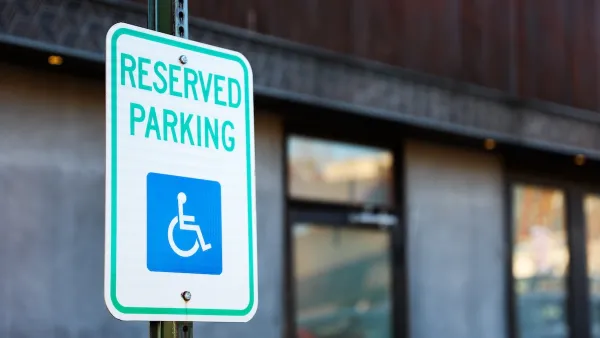Simulators can be a useful tool to help residents think differently about challenges like housing

When California law required Elk Grove (pop. 176,000) to create a strategic housing plan that involved the creation of 4,000 new units—no small feat in the age of NIMBYs—the city decided to take a different approach to public engagement. They partnered with a company called Balancing Act to create a simulation that put residents in city planners’ shoes.
Molly Bolon from Route Fifty writes, “Users were tasked with meeting a 2,063-unit goal for low-income households. They could review all the potential sites where increasing housing density had been proposed and learned about the zoning changes each site would require and how many affordable units each site would create.”
Residents could then try out combinations of sites to locate the required number of housing units and then “submit” their suggested plans to the city council. Chris Adams, the president of Balancing Act, told Route Fifty that the aim of the digital simulation was to “help users shift their mindsets from how developments affect their immediate vicinity to how it could help the entire community reach its housing goals.”
People today, “are very cut off from traditional civic institutions and engagement. Figuring out ways to use technology to our advantage to cut through that is of critical importance,” Ben Metcalf, managing director of the UC Berkeley Terner Center for Housing Innovation, told Route Fifty.
Elk Grove’s simulator is just one example of how communities are turning to online to gather better public feedback. Bolon’s article explores some additional strategies and examples of how modernizing the traditional public engagement process can yield positive results and involving a more diverse spectrum of the community.
FULL STORY: How tech can democratize community engagement

Maui's Vacation Rental Debate Turns Ugly
Verbal attacks, misinformation campaigns and fistfights plague a high-stakes debate to convert thousands of vacation rentals into long-term housing.

Planetizen Federal Action Tracker
A weekly monitor of how Trump’s orders and actions are impacting planners and planning in America.

In Urban Planning, AI Prompting Could be the New Design Thinking
Creativity has long been key to great urban design. What if we see AI as our new creative partner?

King County Supportive Housing Program Offers Hope for Unhoused Residents
The county is taking a ‘Housing First’ approach that prioritizes getting people into housing, then offering wraparound supportive services.

Researchers Use AI to Get Clearer Picture of US Housing
Analysts are using artificial intelligence to supercharge their research by allowing them to comb through data faster. Though these AI tools can be error prone, they save time and housing researchers are optimistic about the future.

Making Shared Micromobility More Inclusive
Cities and shared mobility system operators can do more to include people with disabilities in planning and operations, per a new report.
Urban Design for Planners 1: Software Tools
This six-course series explores essential urban design concepts using open source software and equips planners with the tools they need to participate fully in the urban design process.
Planning for Universal Design
Learn the tools for implementing Universal Design in planning regulations.
planning NEXT
Appalachian Highlands Housing Partners
Mpact (founded as Rail~Volution)
City of Camden Redevelopment Agency
City of Astoria
City of Portland
City of Laramie





























